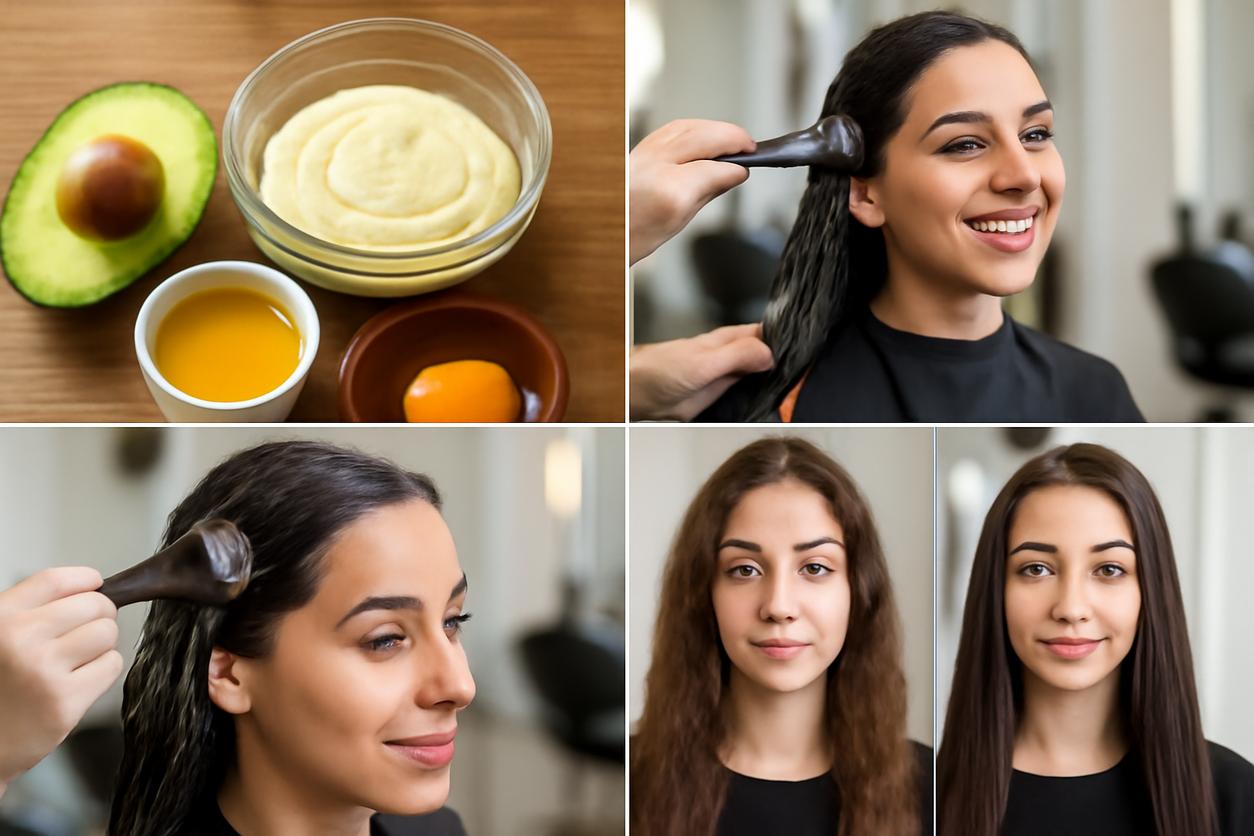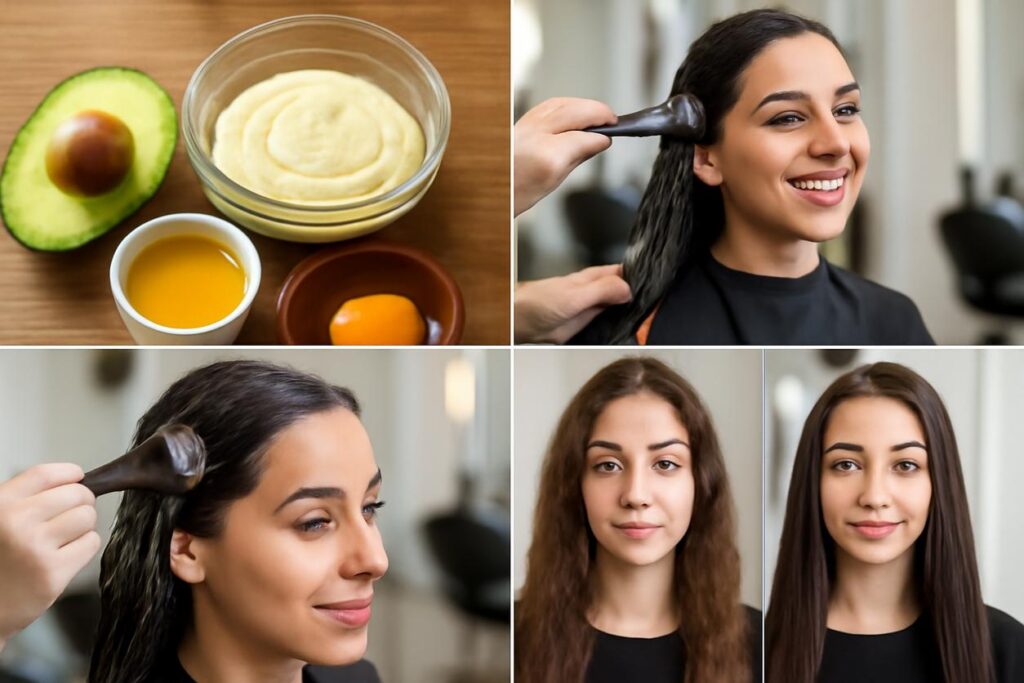Table of Contents
- Why Nighttime Care Helps Hair Recovery
- How to Assess Your Hair Type and Needs
- Prep Steps Before Bed (Detangling, Oils, Protection)
- Nightly Routines by Hair Type
- DIY Overnight Treatments and Recipes
- Pillowcase, Pillowcare, and Sleep Posture Tips
- Morning Wake-Up Routine to Preserve Overnight Benefits
- Science Snapshot: Repair, Growth, and When to See a Professional
- Troubleshooting Common Problems
- FAQs and Myth-Busting About Overnight Practices
Why Nighttime Care Helps Hair Recovery
You might think of your hair care routine as a strictly daytime activity, but the eight hours you spend asleep are a golden opportunity for repair and rejuvenation. While you rest, your body goes into recovery mode, increasing blood flow to hair follicles and repairing cells. This makes it the perfect time to implement an overnight hair care strategy. During the day, your hair is exposed to UV rays, pollution, and mechanical stress from styling. At night, it gets a much-needed break from these aggressors. By creating a nourishing and protective environment for your hair while you sleep, you can wake up with stronger, shinier, and more manageable locks, effectively turning your beauty sleep into an intensive hair treatment.
How to Assess Your Hair Type and Needs
Before you can build an effective overnight hair care routine, you need to understand what your hair truly needs. Assessing your hair type is the first and most crucial step. Hair is generally categorized by its texture and structure.
- Hair Type (Curl Pattern): This refers to the shape of your hair strands. It ranges from Type 1 (straight) to Type 2 (wavy), Type 3 (curly), and Type 4 (coily).
- Hair Structure (Texture): This describes the thickness of individual strands. It can be fine, medium, or coarse. Fine hair is delicate and easily weighed down, while coarse hair has a wider diameter and can be more resistant to moisture.
- Porosity: This is your hair’s ability to absorb and retain moisture. Low porosity hair has tightly packed cuticles, making it difficult for moisture to penetrate. High porosity hair has gaps in the cuticle, so it absorbs moisture easily but also loses it just as quickly. You can do a simple float test: place a clean strand of hair in a glass of water. If it sinks quickly, it’s high porosity. If it floats, it’s low porosity.
Understanding these three factors will guide your product choices and techniques, ensuring your nighttime routine is customized for maximum benefit and not causing unforeseen issues like greasiness or dryness.
Prep Steps Before Bed (Detangling, Oils, Protection)
Regardless of your hair type, a few universal prep steps can make a world of difference. Think of this as the foundation of your nightly ritual.
- Gentle Detangling: Never go to bed with tangled hair. Tossing and turning can tighten knots, leading to significant breakage in the morning. Use a wide-tooth comb or your fingers, starting from the ends and working your way up to the roots. This prevents pulling and minimizes stress on the hair shaft.
- Seal Your Ends: The ends of your hair are the oldest and most fragile part. Applying a tiny amount of a lightweight oil (like argan, jojoba, or grapeseed) can help seal in moisture, prevent split ends, and reduce friction against your pillowcase.
- Choose a Protective Style: Leaving your hair loose can lead to tangles and friction. A loose, simple protective style is key. Options include a loose braid, a low ponytail secured with a silk or satin scrunchie, or twisting your hair into a loose bun on top of your head (often called a “pineapple”). The goal is to keep hair contained without causing tension on the scalp.
Nightly Routines by Hair Type
With the basics covered, it’s time to tailor your overnight hair care to your specific needs. Here are customized routines for 2025 and beyond.
Straight and Fine Hair: Lightweight Options
The biggest challenge for fine, straight hair is avoiding products that weigh it down, leaving it greasy and flat by morning.
- Focus on the Ends: If you use a serum or oil, apply it only to the bottom two-thirds of your hair, avoiding the roots entirely.
- Volumizing Styles: A very loose bun on top of your head can help preserve volume at the roots. Alternatively, a loose braid can add a gentle wave without requiring heat styling in the morning.
- Pre-emptive Dry Shampoo: If you’re prone to oily roots, try applying a small amount of dry shampoo to your roots before bed. It will absorb excess oil as it’s produced overnight.
Wavy to Medium Hair: Balancing Moisture and Shape
For wavy hair, the goal is to hydrate and reduce frizz while preserving your natural wave pattern.
- Lightweight Leave-In: A light, water-based leave-in conditioner or curl cream can be scrunched into damp or dry hair to boost moisture.
- The “Pineapple”: Gather your hair into a very high, loose ponytail on top of your head using a gentle tie like a scrunchie. This protects the waves from being flattened while you sleep.
- Silk or Satin Scarf: For extra protection, you can wrap your hair in a silk or satin scarf or bonnet after putting it in a pineapple. This significantly reduces friction and frizz.
Curly and Coily Hair: Hydration and Anti-Frizz Tactics
Curls and coils are naturally drier and more prone to frizz, so the focus here is on maximum moisture and protection. These curly hair tips are essential for a successful routine.
- Moisturize Generously: This is the time to use richer creams and butters. The LOC (liquid, oil, cream) or LCO (liquid, cream, oil) method is excellent for layering products to lock in hydration overnight.
- Protective Styling is a Must: Beyond the pineapple, styles like twists, braids, or “Bantu knots” can help stretch the hair, retain moisture, and define the curl pattern for the next day.
- Cover Up: A satin-lined bonnet or cap is non-negotiable. It protects your curls from friction, prevents moisture loss to a cotton pillowcase, and keeps your style intact.
Color-Treated or Chemically Processed Hair: Extra Care
Processed hair has a compromised structure, making it weaker and more porous. Your overnight hair care should focus on repair and preventing further damage.
- Bonding Treatments: Once or twice a week, apply a bond-repairing treatment overnight. These formulas work to rebuild the disulfide bonds within the hair shaft that are broken during chemical services.
- Protein and Moisture Balance: Alternate between moisture-rich masks and light protein treatments to give your hair the strength and elasticity it needs.
- Gentle Everything: Be extra gentle when detangling and styling. Use soft hair ties and avoid any styles that pull on your fragile strands.
DIY Overnight Treatments and Recipes
You don’t need expensive products to give your hair a boost. Your kitchen likely holds the ingredients for a fantastic overnight treatment.
- Moisture Mask (All Hair Types): Mix two tablespoons of aloe vera gel with one teaspoon of honey. Aloe vera is hydrating and anti-inflammatory for the scalp, while honey is a natural humectant that draws moisture into the hair. Apply to hair, cover with a shower cap, and rinse in the morning.
- Lightweight Oil Treatment (Fine to Medium Hair): Gently warm two tablespoons of jojoba or almond oil. Jojoba oil is very similar to the scalp’s natural sebum. Apply sparingly to your hair, focusing on the ends.
- Rich Hydration Treatment (Thick, Curly, or Dry Hair): Melt one tablespoon of shea butter and mix it with one tablespoon of coconut oil. This rich blend provides intense moisture and seals the hair cuticle.
Pillowcase, Pillowcare, and Sleep Posture Tips
Your sleep setup plays a surprisingly large role in hair health. A few simple swaps can prevent breakage and frizz.
- Switch to Silk or Satin: Cotton pillowcases have a rough texture that snags and pulls on hair cuticles, causing friction, frizz, and breakage. Silk and satin provide a smooth surface, allowing your hair to glide over it as you move. This is one of the easiest yet most effective changes you can make in your overnight hair care routine.
- Keep it Clean: Your pillowcase absorbs oils, products, and dead skin cells from your face and hair. A dirty pillowcase can transfer this buildup back to your hair, making it greasy and potentially leading to scalp issues. Aim to wash your pillowcase at least once a week.
- Sleep Posture: While you can’t control your movements completely, try to avoid sleeping with your hair pinned underneath your body or shoulders, which can cause tension and tangles. A high bun or pineapple style helps keep it out of the way.
Morning Wake-Up Routine to Preserve Overnight Benefits
How you handle your hair in the morning is just as important as how you prepped it the night before. The goal is to refresh, not restyle from scratch.
- Gentle Takedown: Carefully take down your protective style. Don’t pull or rip through it. Use your fingers to gently separate braids or twists.
- Shake and Fluff: Flip your head over and use your fingertips to gently shake out the roots. This will restore volume and help your hair settle into its natural shape. Avoid using a brush, which can destroy your curl or wave pattern and create frizz.
- Mist and Scrunch: If your hair needs a little life, lightly spritz it with water or a refreshing spray. For wavy or curly types, you can add a small amount of leave-in conditioner or cream and scrunch to redefine the pattern. A tiny drop of serum can smooth any remaining frizz.
Science Snapshot: Repair, Growth, and When to See a Professional
Your body’s cellular repair processes peak during deep sleep. This includes the cells in your hair follicles, which are responsible for growth. During the anagen (growth) phase, these cells divide rapidly. Quality sleep supports this function, while poor sleep can disrupt hormonal balances that influence the hair cycle. A proper nighttime routine reduces physical stress on the hair, preventing breakage and allowing your hair to retain length. Furthermore, good hair nutrition provides the building blocks for this growth. While a great overnight hair care routine promotes a healthy environment for growth, it’s not a magic cure. If you experience significant hair loss, scalp pain, or sudden changes in texture, it’s important to consult a dermatologist or a certified trichologist to rule out underlying medical conditions.
Troubleshooting Common Problems
Even with the best intentions, you might run into a few issues. Here’s how to troubleshoot them.
- Morning Greasiness: This is usually caused by using too much product or applying it too close to the roots. Try using half the amount of product and concentrating it solely on the mid-lengths and ends. A pre-bedtime spritz of dry shampoo at the roots can also work wonders.
- Persistent Frizz: Frizz is a sign that your hair is craving moisture. You may need a more hydrating overnight mask or a richer leave-in conditioner. Also, double-check that your hair is fully protected from friction with a silk or satin scarf, bonnet, or pillowcase.
- Waking Up with Tangles: If you’re still getting knots, your protective style might be too loose. Try a slightly tighter (but still comfortable) braid or ensure all your hair is securely tucked into your bonnet. Always make sure you detangle thoroughly before bed.
FAQs and Myth-Busting About Overnight Practices
Let’s clear up some common questions and misconceptions about caring for your hair overnight.
- Is it bad to sleep with wet hair?Yes, this is a myth to bust. Hair is at its most fragile when wet. Tossing and turning on wet hair can cause significant stretching and breakage. Furthermore, a damp pillow can create a breeding ground for fungus and bacteria, which is unhealthy for your scalp. It’s always best to ensure your hair is at least 90% dry before bed.
- Do I need to do a full overnight routine every single night?Not necessarily. Listen to your hair. You may only need to apply oil or a mask once or twice a week. However, basics like detangling and putting your hair in a protective style are good habits to practice nightly.
- Can an overnight hair care routine make my hair grow faster?It’s more about length retention than growth speed. Your hair’s growth rate is primarily determined by genetics. A consistent routine prevents breakage, which means you retain more of the length you grow. So, while it won’t change your biology, it will help you reach your length goals by keeping your hair healthy and strong.






